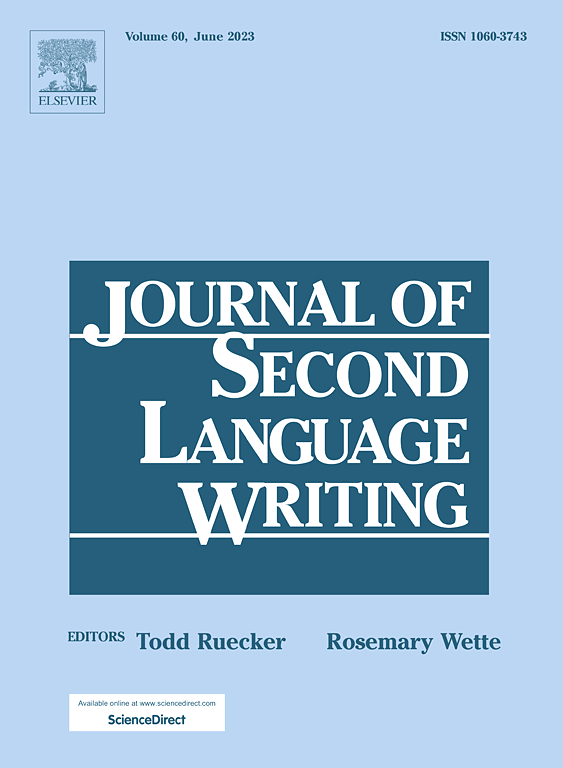日本人第二语言汉语写作的多维分析
IF 4.5
1区 文学
Q1 LINGUISTICS
引用次数: 0
摘要
本研究采用基于语料库的多维分析(MDA),调查了以汉语为母语(L1)和以日语为母语(L2)学习汉语的学生在汉语叙事和议论文写作中的语言差异。探索性因子分析的结果显示了三个功能维度:(1)以动词为中心的叙事性语篇与以名词为中心的抽象信息语篇;(2)词汇输出的丰富性;(3)状语修饰。方差分析的事后多重比较结果显示,中国的叙事和议论文写作风格在第1维度和第2维度上存在显著的风格差异。具体而言,中国叙事写作呈现出以动词为中心的叙事风格,而议论文写作则呈现出整体以名词为中心的抽象信息风格,前者的词汇丰富度明显低于后者。在汉语叙事写作中,第二语言学生在动词中心叙事风格、词汇丰富度和状语修饰方面显著弱于母语人士;在议论文写作中,第二语言学生在词汇丰富度方面显著弱于母语人士。总体而言,本研究成功地将MDA应用于二语汉语跨语域写作,证实了MDA可以为二语汉语写作提供见解。本文章由计算机程序翻译,如有差异,请以英文原文为准。
Multi-dimensional analysis of Japanese native speakers’ L2 Chinese writing
Using corpus-based multi-dimensional analysis (MDA), this study investigated the linguistic variation in Chinese narrative and argumentative writing produced by native Chinese speakers (L1) and native Japanese students learning Chinese as a second language (L2). Results of exploratory factor analysis indicated three functional dimensions: (1) verb-centered narrative discourse versus noun-centered abstract informative discourse, (2) richness of lexical output, and (3) adverbial modification. Post hoc multiple comparison results of analyses of variance revealed that Chinese narrative and argumentative styles of writing show significant stylistic differences in Dimensions 1 and 2. Specifically, Chinese narrative writing shows a verb-centered narrative style, whereas argumentative writing employs an overall noun-centered abstract information style, and the vocabulary richness of the former style was significantly lower than that of the latter. The following significant differences were observed between L1 and L2 writing: (1) in Chinese narrative writing, L2 students were significantly weaker than L1 speakers in verb-centered narrative style, vocabulary richness, and adverbial modification, and (2) in argumentative writing, L2 students were significantly weaker than L1 speakers in vocabulary richness. Overall, this study successfully applies MDA to L2 Chinese writing across registers, confirming that MDA can provide insights into L2 Chinese writing.
求助全文
通过发布文献求助,成功后即可免费获取论文全文。
去求助
来源期刊

Journal of Second Language Writing
LINGUISTICS-
CiteScore
8.80
自引率
13.10%
发文量
50
审稿时长
59 days
期刊介绍:
The Journal of Second Language Writing is devoted to publishing theoretically grounded reports of research and discussions that represent a significant contribution to current understandings of central issues in second and foreign language writing and writing instruction. Some areas of interest are personal characteristics and attitudes of L2 writers, L2 writers'' composing processes, features of L2 writers'' texts, readers'' responses to L2 writing, assessment/evaluation of L2 writing, contexts (cultural, social, political, institutional) for L2 writing, and any other topic clearly relevant to L2 writing theory, research, or instruction.
 求助内容:
求助内容: 应助结果提醒方式:
应助结果提醒方式:


